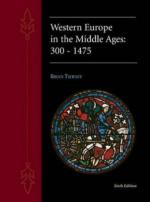|
This section contains 2,547 words (approx. 9 pages at 300 words per page) |

|
The Times. In the early ninth century the Carolingian king Charlemagne formally expressed his wish to divide his realm among his sons after his death. His will was respected, and the first strong medieval European monarchy dissolved. During the six centuries that followed, the nations of modern Europe gradually emerged from the multitude of medieval feudal states that grew up. Succession in the Carolingian Empire followed the Salic Law of equal division among male heirs, hastening the emergence of the multiplicity on political, religious, and linguistic fronts that spelled subsequent disunity, if not disharmony, in medieval European interactions. By 842, as witnessed in the different languages of the Oaths of Strasbourg among two of Charlemagne's sons, Frankish territory itself was already linguistically divided, and Rome was no longer the sole arbiter of authority. In the context of the fluid and heterogeneous collection of governed entities within medieval Europe, most...
|
This section contains 2,547 words (approx. 9 pages at 300 words per page) |

|



